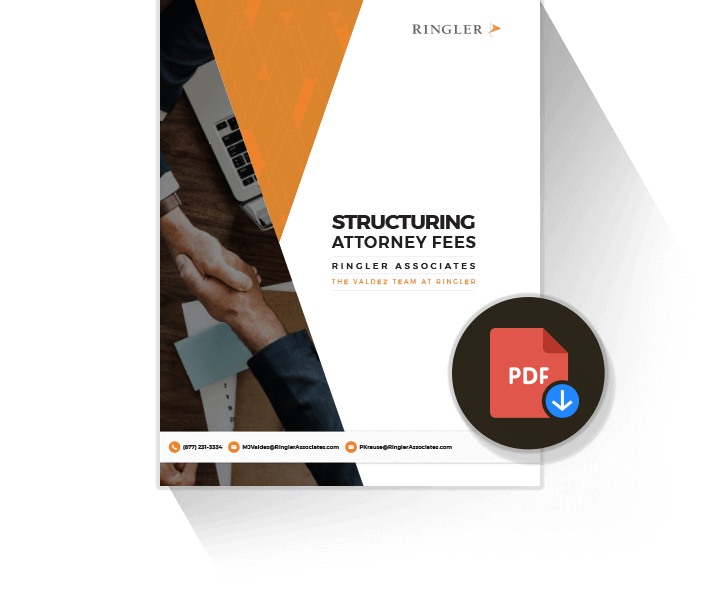
Structuring Fees for Attorneys
Structuring Fees for Attorneys
Structuring Fees for Attorneys
What are they and how do they work?
- What is a Structured Fee?
- General Rules
- Tax Issues/What to Watch
- Benefits
1- What is a Structured Fee?
- A payment alternative similar to what is available to clients.
- Instead of a lump-sum payment for fees, the attorney receives periodic payments, usually over a set period of time.
- It is not completely tax free, like the client’s annuity.
- It is tax deferred.
What is it?
- The total of the attorney’s fee is not taxed immediately.
- The payments are taxed as they are received.
- The fee comes out of the client’s damages, and is a portion of the original settlement.
- It is not a separate settlement.
- Attorneys may structure all or part of their fees.
2- General Rules
- All rules concerning structuring attorney fees are set up to avoid potential tax problems.
- Payments are set and not allowed to be changed.
- Structuring fees needs to be arranged prior to or concurrent with the plaintiff's original settlement.
- Structuring attorney fees needs very specific documentation to avoid potential problems the IRS may have with the deferred taxation.
- Special rules apply to accrual basis taxpayers.
- Most life companies require their own hold-harmless agreements be filled out.
- Settlement documents require specific wording.
- IRS forms are often required like W-9 and W-4.
- A beneficiary may be named.
- The estate of the attorney should be considered as the beneficiary to create more freedom.
- Although the payments are part of the original settlement, most life companies require a separate annuity application.
- Because of potential tax issues, consult a tax advisor before Structuring attorney fees.
- If the attorney is incorporated or a member of a firm, the structure must be coordinated with the attorney’s compensation agreement.
- The structure must comply with the client’s fee agreement and state bar rules.
3- Tax issues / What to Watch:
- The 1994 Childs case (11th Circuit Court of Appeals, Richard A. Childs, et. al. v Commissioner of Internal Revenue) sets a legal precedent for Structuring attorney fees.
- There is no statute or regulation that provides the right to structure a fee and thus defer taxation.
- Deferred taxation of this kind can receive IRS scrutiny.
- IRC sections 83, 476 (g), and 451, and the constructive receipt and economic benefit doctrines have, in the past, given the IRS grounds to challenge the structuring of attorney fees.
- Because of the possible tax issues, the general rules above, and rules set forth by the life companies responsible for paying structured settlements to the client, need to be followed carefully when Structuring attorney fees.
4- Benefits:
- Cash Flow. The payments provide a steady stream of income, either for a certain period, or for life, and make overall income management easier.
- Low Risk. There is a low investment risk.
- Guaranteed payments.
For more in-depth information on Structured Attorney Fees, visit our blog or contact us for a free consultation.








